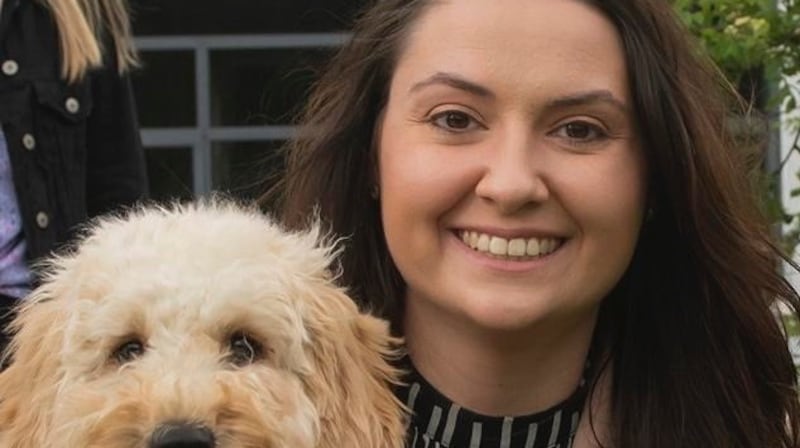In your research, you are comparing skin cancer in humans and dogs, why?
Let me start by saying that no puppies or dogs are harmed by this study, and, yes, we compare skin cancers in dogs and humans. Melanoma is a type of skin cancer that both humans and dogs can get. In humans, melanoma can be aggressive and it spreads around the body.
In dogs, melanomas can behave differently, and some are less likely to spread. We want to understand why that is, so we analyse blood samples and melanoma lesions or tumours that have been surgically removed from dogs and humans as part of their treatment for the disease. We analyse tissue that would otherwise be disposed of, but there could be valuable information in there.

What kind of information are you looking at?
One of the big discoveries about cancer in recent times is that tiny little fatty packages called extracellular vesicles can travel out from tumour cells and go to other parts of the body.
They signal to that part of the body to get ready for tumour cells, and the tumour can then spread. This is the process we are examining in melanoma, comparing it in humans and dogs. If we can figure out how to block these little droplets, the idea is that you could stop melanoma tumours spreading.
Is this comparison between species a common approach to this question?
The approach is called comparative oncology – comparing cancers – and it is quite new in Ireland, it is more established in the US. Our project brings together scientists, clinicians such as myself and vets in University College Dublin, and the hope is that by taking this approach we will uncover new ways to help both humans and dogs.
Tell us about your surgical training
I studied medicine in NUI Galway, and I knew very quickly that surgery was what I wanted to do. As an intern I really fell in love with plastic surgery, where we reconstruct skin and other tissues that are affected by disease or injury. I'm specialising in that now. I love that you take a really practical and creative approach with patients to help them solve an issue, and there is a lot we can do for patients.
And how did you get into research?
My partner had secured a place on the Icat (Irish Clinical Academic Training) programme, where the Health Research Board and Wellcome Trust support you to learn how to do scientific research as part of your clinical training. I thought it looked good, so I applied too, and for the past year I have been doing this project with wonderful mentors at UCD, while also seeing patients at the weekends.
What have you been learning about science and medicine in that time?
I think the mix of working on research at the bench while also treating patients helps you to ask new questions and see the relevance in what you find. Also, in the comparative oncology project, we have vets and clinicians and scientists bringing different perspectives on questions, and there is a lot to be gained.
And how do you take a break?
It has taken a bit of time to get the balance between work and not-work. But what really helps is that most evenings we get out and walk with our dog Cali. And, yes, I do check her regularly for any signs of melanoma!










